Themed collection Biomaterial Interactions with the Immune System

Biomaterial interactions with the immune system
Guest editors Chris Jewell and Joel Collier introduce this Biomaterials Science themed issue on biomaterial interactions with the immune system.

Biomater. Sci., 2019,7, 713-714
https://doi.org/10.1039/C8BM90063A
Surgery-free injectable macroscale biomaterials for local cancer immunotherapy
Up-to-date review and perspective on injectable macroscale biomaterials for local cancer immunotherapy.
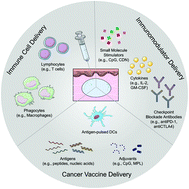
Biomater. Sci., 2019,7, 733-749
https://doi.org/10.1039/C8BM01470A
Analyzing the scaffold immune microenvironment using flow cytometry: practices, methods and considerations for immune analysis of biomaterials
The immune system has evolved as a powerful tool for our body to combat infections, and is being engineered for new treatments in cancer, autoimmune disease, and trauma.
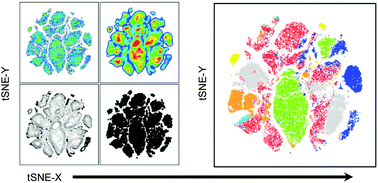
Biomater. Sci., 2019,7, 4472-4481
https://doi.org/10.1039/C9BM00349E
Harnessing the layer-by-layer assembly technique to design biomaterials vaccines for immune modulation in translational applications
Layer-by-layer (LbL)-based biomaterials vaccines are broadly explored to tune the immunity in different diseases for translational purposes.
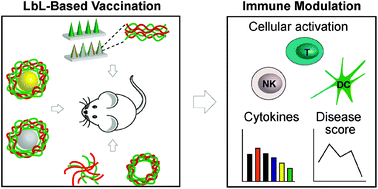
Biomater. Sci., 2019,7, 715-732
https://doi.org/10.1039/C8BM01219A
Polymeric micro- and nanoparticles for immune modulation
New advances in biomaterial-based approaches to modulate the immune system are being applied to treat cancer, infectious diseases, and autoimmunity.
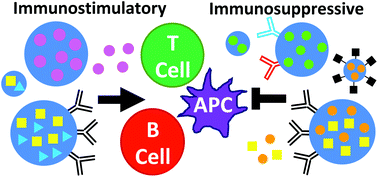
Biomater. Sci., 2019,7, 14-30
https://doi.org/10.1039/C8BM01285G
Hyaluronic acid-based extracellular matrix triggers spontaneous M2-like polarity of monocyte/macrophage
HA-based matrix spontaneously triggers M2-like polarity of human monocytes/macrophages through the CD44-mediated activation of STAT3.
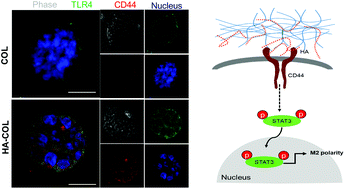
Biomater. Sci., 2019,7, 2264-2271
https://doi.org/10.1039/C9BM00155G
Immunomodulatory vasoactive intestinal peptide amphiphile micelles
Two different vasoactive intestinal peptide (VIP) amphiphiles have been formulated which readily form micelles of varying shapes. Interestingly, VIP micelle structure has been found to directly correlate to anti-inflammatory behavior providing evidence that these biomaterials can serve as a promising new therapeutic modality.
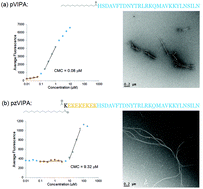
Biomater. Sci., 2018,6, 1717-1722
https://doi.org/10.1039/C8BM00466H
Chitosan/poly(γ-glutamic acid) nanoparticles incorporating IFN-γ for immune response modulation in the context of colorectal cancer
This work highlights the potential synergistic effect of chitosan/γ-PGA nanoparticles with immunomodulatory cytokines, like IFN-γ, for anticancer therapy.
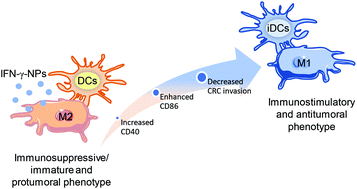
Biomater. Sci., 2019,7, 3386-3403
https://doi.org/10.1039/C9BM00393B
A chimeric, multivalent assembly of galectin-1 and galectin-3 with enhanced extracellular activity
Assembly of a fusion of galectin-1 and galectin-3 with higher carbohydrate binding affinity and a significantly lower effective dose than galectin-1.
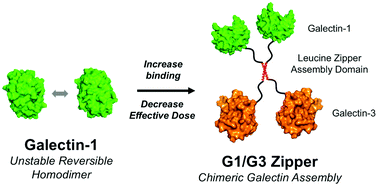
Biomater. Sci., 2019,7, 1852-1862
https://doi.org/10.1039/C8BM01631C
Engineering an immunomodulatory drug-eluting stent to treat laryngotracheal stenosis
A rapamycin-eluting PLLA-PCL stent is deployed into a diseased mouse trachea to treat laryngotracheal stenosis.
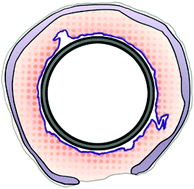
Biomater. Sci., 2019,7, 1863-1874
https://doi.org/10.1039/C8BM01623B
The efficiency of cytosolic drug delivery using pH-responsive endosomolytic polymers does not correlate with activation of the NLRP3 inflammasome
Polymers that are unable to escape the early endosome, and instead cause lysosomal rupture, activate the NLRP3 inflammasome.
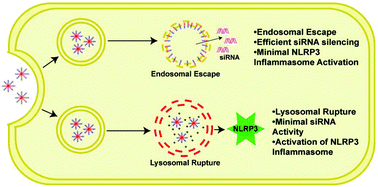
Biomater. Sci., 2019,7, 1888-1897
https://doi.org/10.1039/C8BM01643G
Prussian blue nanoparticle-based antigenicity and adjuvanticity trigger robust antitumor immune responses against neuroblastoma
Photothermal therapy using CpG oligodeoxynucleotide-coated Prussian blue nanoparticles increases the tumor antigenicity and adjuvanticity, eliciting long-term tumor regression and immunological memory.
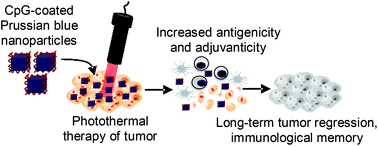
Biomater. Sci., 2019,7, 1875-1887
https://doi.org/10.1039/C8BM01553H
Engineering release kinetics with polyelectrolyte multilayers to modulate TLR signaling and promote immune tolerance
Degradable polyelectrolyle multilayers to enable controlled release of a regulatory toll-like receptor ligand to restrain inflammation and promote immune tolerance.
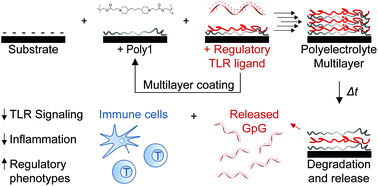
Biomater. Sci., 2019,7, 798-808
https://doi.org/10.1039/C8BM01572D
Single dose combination nanovaccine provides protection against influenza A virus in young and aged mice
Combined polyanhydride nanoparticles and pentablock copolymer micelles provide protection against homologous challenge in aged mice.
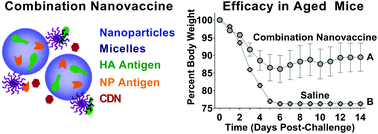
Biomater. Sci., 2019,7, 809-821
https://doi.org/10.1039/C8BM01443D
Toward reducing biomaterial antigenic potential: a miniaturized Fc-binding domain for local deposition of antibodies
A novel bi-functional peptide consisting of an Fc-binding domain and self-assembly sequence is shown to retain IgG in vivo.
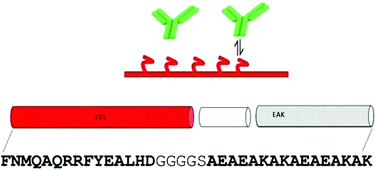
Biomater. Sci., 2019,7, 760-772
https://doi.org/10.1039/C8BM01220B
Identifying key barriers in cationic polymer gene delivery to human T cells
Decreased uptake of polyplexes and an increased intracellular pH contribute to poor gene delivery to human T cells via cationic polymers.
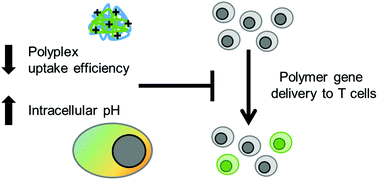
Biomater. Sci., 2019,7, 789-797
https://doi.org/10.1039/C8BM01262H
In vivo targeting of DNA vaccines to dendritic cells using functionalized gold nanoparticles
Gold nanoparticles functionalized with a thiol ligand containing both mannose mimicking shikimoyl- and transfection enhancing guanidinyl-functionalities for in vivo delivery of DNA vaccines to dendritic cells.
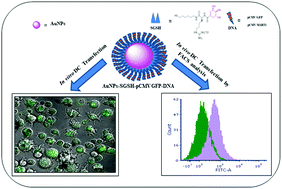
Biomater. Sci., 2019,7, 773-788
https://doi.org/10.1039/C8BM01272E
External temperature control of lymphatic drainage of thermo-sensitive nanomaterials
External temperature control actively modulated the biodistribution of a thermo-sensitive nanomaterial among the injection site and the draining LNs.
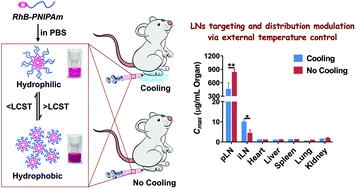
Biomater. Sci., 2019,7, 750-759
https://doi.org/10.1039/C8BM01298A
Targeting small molecule drugs to T cells with antibody-directed cell-penetrating gold nanoparticles
We sought to develop a nanoparticle vehicle that could deliver small molecule drugs to T cells.
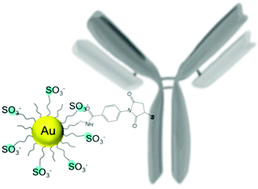
Biomater. Sci., 2019,7, 113-124
https://doi.org/10.1039/C8BM01208C
Response of macrophages and neural cells in contact with reduced graphene oxide microfibers
rGO microfibers mediate polarization of RAW-264.7 macrophages towards an M2 phenotype and support neural progenitor cell growth.
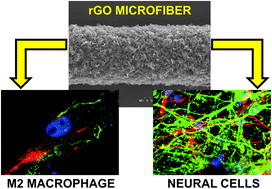
Biomater. Sci., 2018,6, 2987-2997
https://doi.org/10.1039/C8BM00902C
Correction: The efficiency of cytosolic drug delivery using pH-responsive endosomolytic polymers does not correlate with activation of the NLRP3 inflammasome
Biomater. Sci., 2019,7, 2200-2200
https://doi.org/10.1039/C9BM90022E